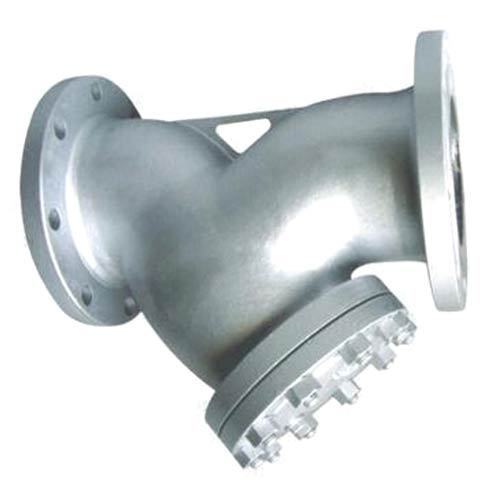
Y-type strainers are devices used to separate unwanted solid particles from gas, liquid or steam flowing in a pipe. They derive their name from their shape. The Y-type strainer is commonly applied in pressurized fluid lines as well as in vacuums and suction conditions.
It is used where small solid particles are expected within the fluid and there is a less frequent clean out. They make use of a filtering element, which is basically a perforated wire mesh. In instances where the material to be cleaned out from the flow is small, hence a long duration before screen cleaning, the line is shut down and the strainer cap is removed to allow for manual cleaning of the strainer screen. In applications with high dirt density, a blowing system is fitted so that the screen can be cleaned without the need to remove it from the strainer. You should also have a look at the manual rf shielding having 6 filter ports and multiple interface options including USB, SMA, RJ45, BNC, and more—ideal for wireless device testing in lab and production environments.
Technical Specifications of Y-Type Strainers
The technical specifications of the Y-type strainers vary according to the chemical composition of the fluid it will be handling. The material of the housing could be carbon steel or stainless steel. Carbon steel Y strainers are suitable for the transmission of oil and petrochemicals since it is resilient to mechanical and thermal shock. Stainless steel Y strainers are best suited for applications in which high resistance to corrosion is required. They are mainly applied to the pharmaceutical, food and chemical industries. Other materials are also available for the housing as well as coating. It also consists of a filter element whose material coincides with that of the housing. For instance, a Y-type strainer with carbon steel housing material has a filter element made of carbon steel. The end connection could be either flanged or threaded. The type to choose depends on the application intended. The flanged end connection is made as per one's request. The threaded end connection could be either NPT or BSP. The sizes available range from 0.5-inch to line size to 24-inch line size. Higher sizes can be made on request. The size chosen also depends on the application and the volume of fluid involved. The filtration rating also varies from 1 micron to 1000 microns. The pressure rating runs up to 100 PSI. Strainers with a higher-pressure rating can be made on request.
Applications of Y-type Strainers
In permanent applications, the Y-type strainer is the most appropriate and common. It works well in mounting horizontal and vertical pipelines. The strainer has a wide range of applications of fluid straining to protect equipment within the pipeline. If left unprotected, the pipeline would most likely end up being clogged. The applications include:
- Regulator and valve protection.
- Steam traps protection.
- Flow meter protection.
- pump protection
- Heat exchanger and refrigerating set protection.
- Protection of Instrumentation and ancillary piping item.

For all these applications the Y strainer is seen as the most appropriate. Its shape and compactness make it ideal for handling high-pressure conditions. There are Y- strainers that can handle pressures of up to 6000 PSI but they are uncommon. They are only made and applied under very extreme pressure conditions. Apart from the standard sizes and other specifications made for standard applications, the Y strainers can also be tailor-made for particular extreme conditions. In each application, the Y strainer has to be able to handle any anticipated stress without strain. Most applications of the Y strainer involve gases and liquids. There are those that are applied to handle steam. High-pressure steam changes some the dynamics of fluid flow as a result of the temperature factor. For instance, steam at a pressure of 1500 PSI will have a temperature that is above 10000 F. Carbon steel cannot handle such high temperatures and chrome moly steel is the ideal material to be used to construct a Y strainer for application in such a case. In comparison, air and natural gas applications are characteristic of very high pressures. The high pressure does not translate to high pressures in these cases and hence Y strainers made of carbon steel are ideal. The high pressures, however, require the material to be of sufficient thickness.
Advantages of Using Y-type Strainers
Using a Y strainer is a cost-effective method of straining in fluid transmission through pipelines. The Y strainers are advantageous in that they can be installed either vertically or horizontally. Other types of strainers do not have this allowance. Regardless of whether the strainer has been installed horizontally or vertically, the filtering element should be on the downstream end so that the unwanted material can be effectively collected. It is paramount to ensure that the Y strainer used is of the correct size and thickness. Some manufacture may try to reduce the size or thickness of a particular strainer to save on material. An undersized strainer may cause havoc if installed for an application it cannot handle.



